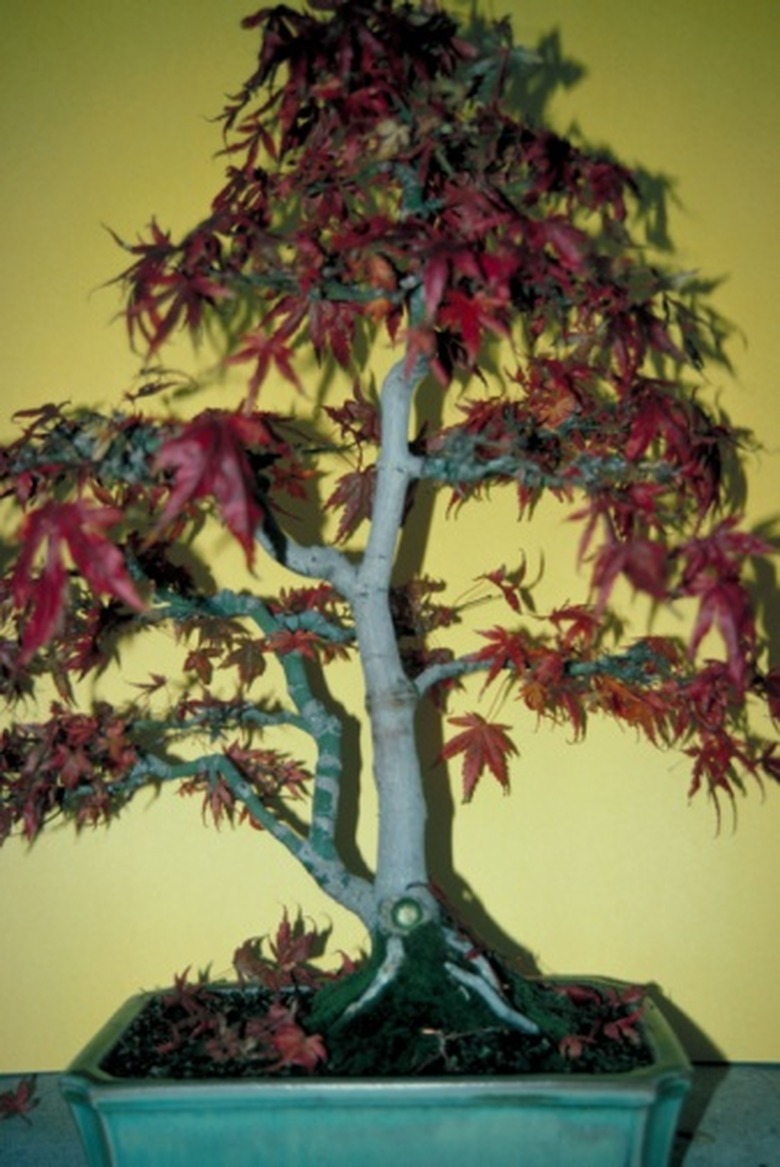How To Grow Maple Trees Indoors
Things Needed
-
1/2-inch diameter gravel
-
3-gallon pot
-
Sand
-
Potting soil
-
Peat moss
-
Fertilizer
-
Pruning shears
-
Water
-
Small gardening shovel
-
Work gloves
Indoor growing poses several challenges, especially when you're growing a tree. Although Japanese maples trees can be large, they can be grown indoors in containers and often used used in the art of bonsai. Growing Japanese maples indoors means solving the problem of their natural size while addressing their seasonal requirements. Once you accomplish these two feats, you will be able to enjoy Japanese maple trees inside as easily as you do outside your home.
Step 1
Place a layer of gravel into your 3-gallon pot. Add a 1/2-inch layer of sand on top of the gravel. Combine 4 parts potting soil, 1 part peat moss and 1 tbsp. fertilizer. Fill the rest of the pot with the mixture.
Step 2
Remove your Japanese maple seedling from its container. Gently remove the soil from the roots of the seedling with your fingers. Trim one-fifth of the length of the roots from the seedling with your pruning shears to stunt the growth of the plant.
Step 3
Make a hole in the soil mixture in your pot. Place the roots of the seedling into the hole and cover them with loose soil. Water the plant gently with room-temperature water until the soil is damp, but not soaked.
Step 4
Water your tree daily. Trim the ends of the branches as necessary to ensure the tree does not overgrow the pot. Slide the point of your small shovel into the soil 1 inch from the rim of the pot each week to keep the roots trimmed so the growth of the tree will remain stunted. Add a tablespoon of fertilizer each month to keep your maple tree fed.
Step 5
Place your potted maple outside in a safe place for a few hours each night. Increase the length of this outdoor exposure a half-hour each month to allow the maple time to follow its natural seasonal patterns.
Warning
Wear work gloves when using tools and gardening to protect your hands from injury and to protect your Japanese maple from the acids in your hands.
